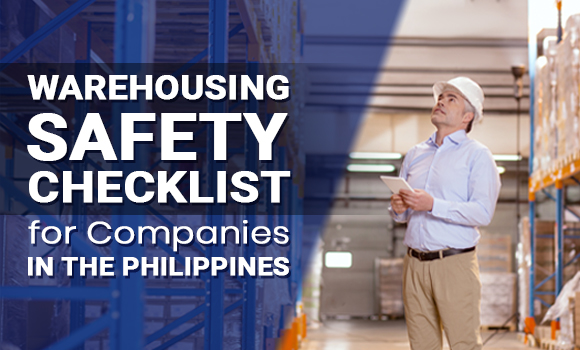Good warehousing in the Philippines shouldn’t just be efficient or accurate, but built around safety as well. Following a warehousing safety checklist can help you reflect good corporate values and steer clear of legal woes or bad publicity. You may even save an employee’s life because of a safety measure your company put in place. To get you started, here’s a 6-point warehousing safety checklist for companies in the Philippines.
Warehousing Safety Checklist for Philippine Companies: 6 Points to Consider
1. Risk Assessment
First up on your warehousing safety checklist is a risk assessment! This will give you an overview of the factors that can potentially harm your employees at work. From this, you can see whether you’ve taken enough warehouse safety precautions or need to do more. It’s the company’s responsibility to keep employees and other people safe from harm within the premises, after all. Risk assessments just take five steps:
a. Identify hazard
b. Decide who’s at risk and how they’re at risk
c. Plan out precautions
d. Document findings and implement precautions
e. Update your risk assessment as needed
2. Proper Gear and Safety Training
Depending on your industry, employees may be working with hazardous materials, operating heavy equipment, or exposing themselves to fumes or noise. Protect your workers with proper gear, which can include:
• Helmet/hard hat
• Face shield
• Eye protection (e.g. goggles)
• Ear protection (e.g. earmuffs)
• Gloves
• Reflective vests
• Knee pads
• Respiratory protection (e.g. masks)
Your company may also schedule regular training sessions and safety meetings. These can tackle handling of hazardous materials, machine operation, proper lifting stances, and even box cutter safety tips.
3. Clear, Highly Visible Warehouse Signage
Readable and easily understandable signs throughout the work premises are also an essential on your warehousing safety checklist. Here are some specific guidelines:
• Crates: Labels should include contents, customer information, and instructions on handling and storage.
• Machines: Instructions should be clear and may include graphics to help newer employees learn operating basics quickly.
• Designated areas: Restricted access sites, receiving docks, and other such areas should be indicated by proper signage.
• Others: Be sure to identify safe vehicle routes, exits, and fire extinguishers’ locations as well.
4. Floor Mats, Guard Rails, and Anti-Slip Tape
Impact-absorbing floor mats can reduce strain on shins and leg joints and protect against the occasional trip or fall. Meanwhile, guard rails and anti-slip tape can prevent falls from stairs, ledges, and inclines.
5. Accessible and Fully Stocked First-Aid Kits
Keep several first-aid kits in easy-to-reach spots around your warehouse. Replenish each kit regularly. Portable kits and eye-wash stations are great for larger warehouses.
6. LOTO Procedures
Make sure your warehouse has proper locking-out and tagging-out (LOTO) procedures in place. These refer to methods of shutting down machines for maintenance, repair, or set-up. LOTO procedures protect employees by keeping them from gaining access to a machine with its moving parts or energy source exposed.
Keep your employees safe by following this warehousing safety checklist. A safer warehouse for your company in the Philippines will certainly reduce workplace accidents, resulting in happier employees, efficient workflow, and maybe even an industry commendation.
Need more advice on warehousing in the Philippines? Get professional advice from Worklink Services, Inc. (WSI), which has provided its clients with reliable logistics solutions since 1999. This track record has shaped WSI into a reliable B2B courier company in the country with extensive expertise on warehousing in the Philippines, including warehousing safety checklists. Contact us today to find out more!
Found this safety checklist helpful? Visit our blog regularly for more industry updates and tips on warehousing in the Philippines.


